What are industry 1.0 2.0 3.0 and 4.0? What’s the history from industry 1.0 to 4.0? What are the differences between those industrial revolutions? What are the challenges of industry 4.0? What technologies characterise each era? In this article, we will explain all you need to know!
For more amazing sustainability videos, visit our video gallery and subscribe to the sustainability success youtube channel.
The production and manufacture of products can be said to be as old as mankind himself. Even before we began manufacturing products for commercial purposes, we used to produce simple objects for home and personal use. For example, goods such as weapons, clothing, shelter and food were all produced by hand. And these basic manufacturing processes were done in small warehouses using simple tools and equipment.
However, great advancements have now been made in the production industry; new technologies have been introduced in the modern industry, leading to a significant change in how the manufacturing processes are carried out. Due to these developments, we are now able to produce items on a large scale and for commercial purposes. This process of change (or transition) from a handicraft economy to a manufacturing industry that uses machines and new technologies is what is referred to as the Industrial Revolution.
Now, let’s dive deeper into the evolution of industry 1.0 to 4.0 history!
Industry 1.0 to 4.0
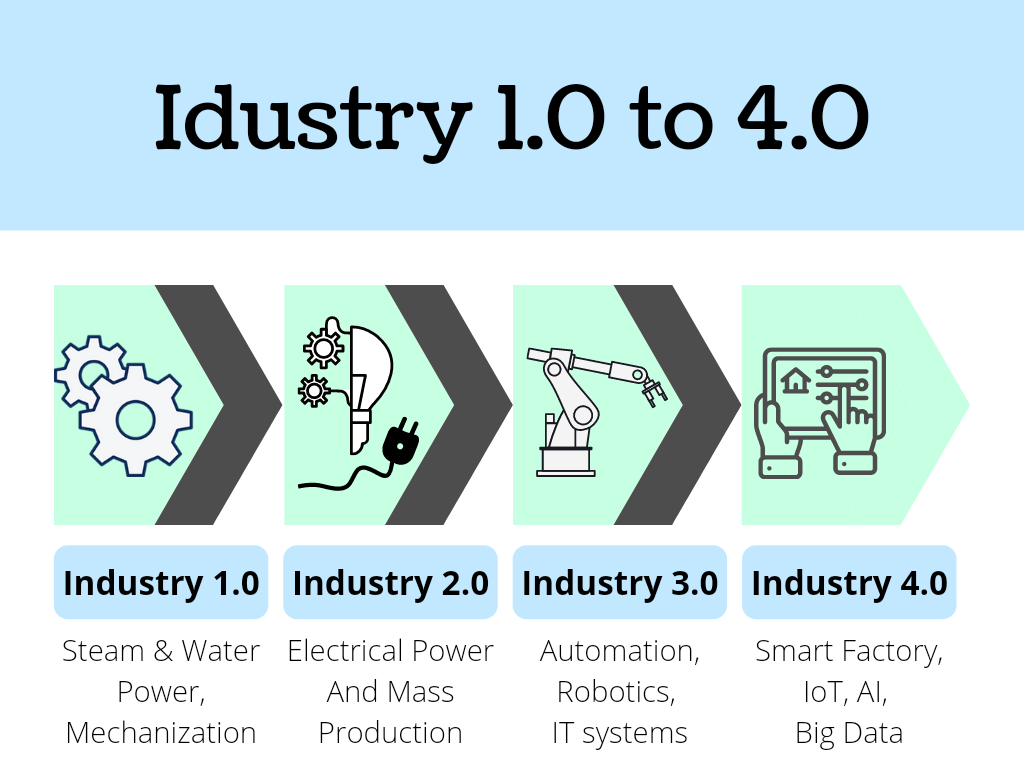
The industrial revolution 1.0 began in the 18th century, covering the period between 1760 to 1840. It was characterized by major transitions that changed the existing economies of different continents. Before the industrial revolution, most of the economies were based on simple handicrafts and agriculture. However, as the revolution started, the economies began to be based on new factory systems, large-scale industries and mechanized manufacturing. Also, new industries were developed, and these featured modern power sources, modern machines and even new strategies of organizing different departments in industries.
The transitions of the industrial revolution were mainly evident in three different regions: The United States, Great Britain and continental Europe. However, by the 20th century, the revolution had already spread to almost every other part of the world, bringing about a new era of modern industry. Yet, these changes did not occur in one single move. Rather, the transitions happened gradually, with each stage enhancing into a better, modern and more innovative stage.
Stages of the industrial revolution 1.0 to 4.0:
- IR 1.0 or Industry 1.0 meaning: the First Industrial Revolution
- IR 2.0 or Industry 2.0 meaning: the Second Industrial Revolution
- IR 3.0 or Industry 3.0 meaning: the Third Industrial Revolution
- IR 4.0 or Industry 4.0 meaning: the Fourth Industrial Revolution
So far, we have gone through three industrial revolutions: Industry 1.0, industry 2.0 and Industry 3.0. And now, we are in the midst of the fourth industrial revolution (industry 4.0). In this article, we look into all the four stages of the industrial revolution, what each involved and the kind of technologies that characterize each era of revolution. Now, let’s learn more about Industry 1.0 to 4.0!
What is industry 1.0? The first industrial revolution
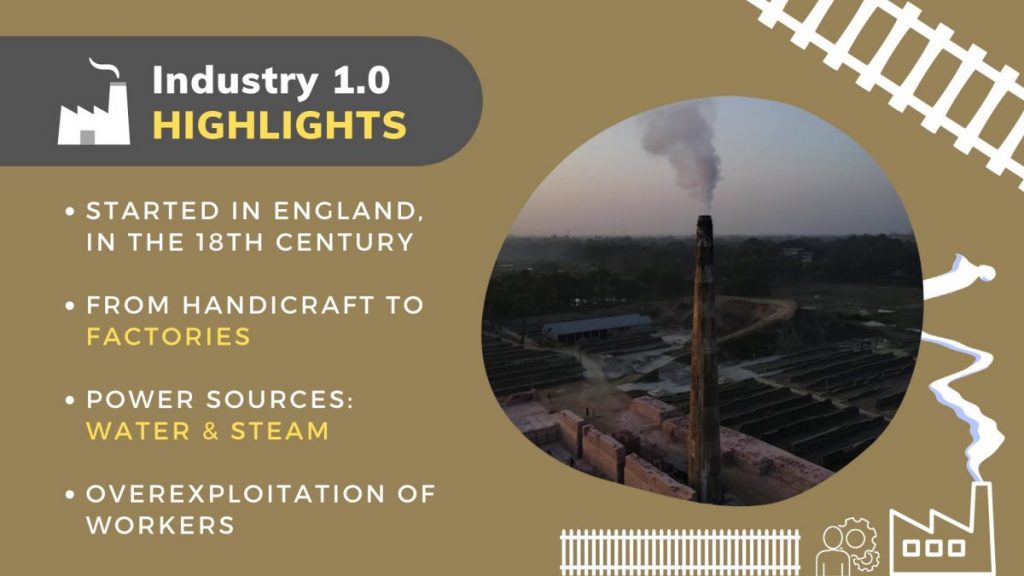
Industry 1.0 is the first industrial revolution. It began in England, in the 18th century; it covered the period from around 1760 to 1840. By the latter period of the 18th century, the industrial revolution had already spread to the United States. Industry 1.0 is related to the mechanization of production and vast usage of steam power. It also marked the first major transition from a handicraft economy to one involving the use of machines in the manufacturing processes.
The industries that were impacted by industry 1.0 included the glass, mining, agriculture and textile industries. For example, before the revolution, threads and textiles were manufactured at home using simple spinning wheels. The basic tools, materials and equipment used to make the textiles were usually provided by merchants. Using these tools made it difficult to manage production, and also to produce large quantities of items.
However, with the uprising of industry 1.0, mechanization was introduced in the production process, leading to faster processes and relatively large-scale production. In fact, the mechanized version led to a thread production that was eight times more in volume than the former production process.
While steam power was already known, it hadn’t yet begun to be used in industrial processes. Therefore, when its usage was introduced in the industry, it was considered the biggest breakthrough ever made during this era. Not only did steam power lead to the production of higher volumes, it also led to a significant increase in human productivity. For example, rather than employing people to power weaving looms, steam engines were used to provide adequate power for the machines.
The Industry 1.0 Technologies
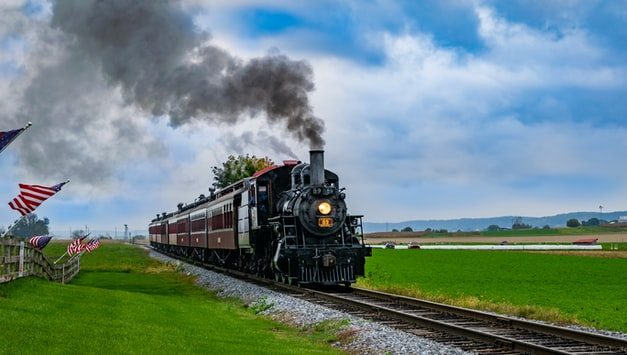
The landmark technologies that characterized industry 1.0 were the machines powered by water and steam. A good example of such machines is the weaving loom which was first developed in 1784. Other machines that were invented during this period include the water wheel, more complex spinning wheels and the steam engine.
These newly invented machines allowed workers to produce goods in large quantities. Also, they made the production process much more efficient and cost-effective. As a result, most small businesses grew and developed to become large organizations that served a larger number of people. The advancing of technologies especially brought significant benefits to the textile and transportation industries. These benefits became even more evident when coal began to be used as an additional source of fuel for different manufacturing processes.
One major downside of the first industrial revolution was that there was greater demand for production machines than the supply. After all, these machines had just been invented, which meant that there were relatively fewer machines and technologies to meet all of the customers’ demands. This led to more pressure, especially on workers who were considered as the lower class. These workers were forced to work for long hours, and under unhealthy working conditions. However, in 1833, the Factory Act was put in place in the UK to ensure that high standards were followed in all workplaces, guaranteeing the safety and protection of all employees.
What is Industry 2.0? The second industrial revolution
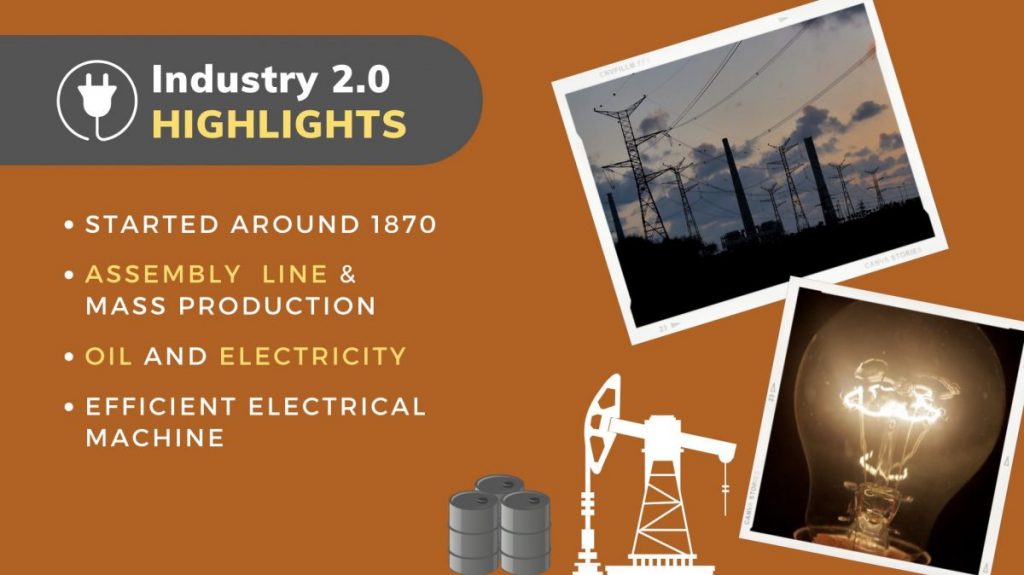
The second industrial revolution (Industry 2.0) began in the 19th century, around the 1870s. It mainly occurred in Germany, America and Britain. Some historians also refer to this period as the “Technological Revolution” era. It mainly involved industrial processes that used machines powered by electrical energy.
Which industrial revolution used electric energy to create mass production for the first time?
Up until this point, industries were already using electricity as one of the driving forces. However, it was not until the second industrial revolution that electrical machines were invented. Compared with the water and steam based machines, electrical machines were much more efficient, easier to operate and maintain. More so, they were very cost-effective, requiring fewer resources and human effort than the machines used during the first industrial revolution.
Industry 2.0 also featured a more streamlined mass production process. This was happened after creating the first assembly line, which made it easier to produce items in larger volumes and better quality. In fact, mass production of items was considered a standard practice during this period.
Another notable aspect of the second industrial revolution was the improvement in the industry culture. During industry 1.0, management programs were introduced through the 1833 Factory Act; these programs not only ensured that manufacturing facilities were highly efficient but also ensured that employees worked for reasonable hours and were protected.
During industry 2.0, more techniques and programs were put in place to improve the quality of output and ensure better management of production. These techniques involved lean manufacturing principles, allocation of resources, just-in-time manufacturing strategies and a better division of labour. And among the many innovative people who brought about these effective strategies and techniques was Frederick Taylor; an American mechanical engineer who studied labour patterns, enabling efficient workplaces and better optimization of the worker’s time.
The Industry 2.0 Technologies
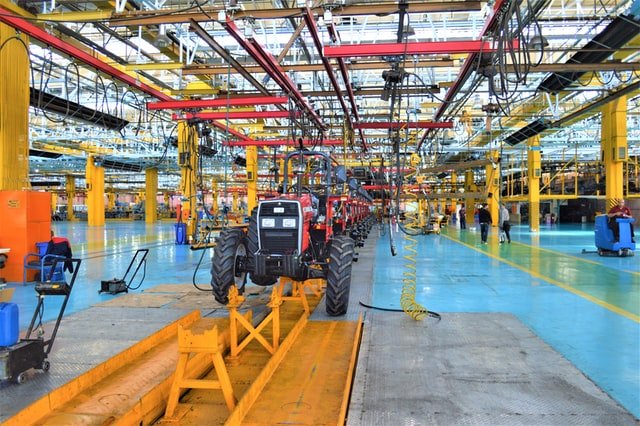
There are many technological systems that were developed during the second industrial revolution. The major aspect of this era was the use of electrical energy and steel in production industries. The use of electricity made it possible for many industries to incorporate modern production lines and carry out mass production of goods. Also, industry 2.0 was characterized by extensive telegraph and railroad networks. These networks facilitated a faster transportation system. More so, it allowed for faster communication and transfer of information.
In 1901, Ransom E. Olds established the very first assembly line. As the producer of Oldsmobile cars, Ransom started a system that produced at least 20 units each day. And in just one year, the company increased its production, registering an output that was 500% more than their former output. Thanks to the creation of more vehicles by Oldsmobile, this period saw a major decrease in the overall pricing of automobiles. More so, the technological systems used by the company served also as a model for Henry Ford.
Henry Ford was the first person to bring about the idea of mass production. He cultivated a keen interest in how the pigs at a Chicago slaughterhouse would be hung on conveyor belts. There were different butchers, and each would perform just part of the work of butchering the pigs. Henry then applied these principles into the production of automobiles, changing how the process used to be carried out.
For instance, before his invention, only one station would assemble the whole automobile. However, by applying the principles that he learnt from the conveyor belts and distribution of labour, Henry created a new system where all vehicles would be produced step by step, on a conveyer belt. This invention made the production of automobiles much faster and cost-effective. Henry Ford is also credited as the father of automotive mass manufacturing.
Differences Between Industry 1.0 and 2.0
| Industry 1.0 | Industry 2.0 | |
| Source of power | Water and steam were the main power sources for machines and industrial processes. | Electricity and oil were the main source of power for most machines and industrial processes. |
| Labor | More labour force and human resources were required for most industrial processes – This is because there was more demand than supply, which meant more people being employed and working for lengthy hours. | Less labour force was required, and more people lost their jobs – This is because machines replaced workers, carrying out most of the activities that these would undertake. |
What is Industry 3.0? The third industrial revolution

The third industrial revolution is also commonly referred to as the ‘Digital Revolution’ or the ‘First computer era.’ It began in the 20th century, around the 70s. During this period, simple, yet relatively large computers were developed. These computers had quite a good computing power, and they laid a strong foundation for the development of modern-day machines.
The industrial revolution 3.0 began through partial automation; a technological process that was achieved using simple computers and Programmable Logic Controllers (or memory-programmable controls). Before the revolution, some simple automated systems had been developed. However, these still relied heavily on human intervention and input.
Information technology (IT) and electronics were introduced in many production processes, furthering automation in the manufacturing processes. Furthermore, the automation processes advanced even further following the use of renewable energy in the production industries, as well as the development of connectivity and internet access.
It is crucial to note that Industry 3.0 (the third Industrial revolution) is still present even today. In fact, most modern-day factories and production industries are currently at this evolution level. And it is due to the invention of these technologies that we can now automate entire production processes. Good examples of these are robots which can be programmed to perform certain activities by themselves, without any human intervention.
The Industry 3.0 Technologies

During the latter period of the 20th century, great advancements were made in the electronics industry. For example, different varieties of electronic devices were invented, such as integrated circuits and transistors. These electronic devices brought about a partial automation of the machines which were used in the production processes. In turn, this led to greater accuracy in production, increased speeds, better competency, and even replacement of human labour in some manufacturing processes.
In the 1960s, the Programmable Logic Controller (PLC) was invented; one of the landmark inventions that triggered automated processes using electronics. Also, the incorporation of electronic machines in the production processes led to a demand for software systems to control this electronic hardware. Consequently, this fuelled the software development market of the time.
In addition to enabling electronic devices, the software systems also made it possible to carry out different management processes. For example, activities such as inventory management, tracking of products, enterprise resource planning, scheduling of product flows and shipping logistics were enabled by the software systems. And from that period, the systems are constantly being developed and automated using information technology and electronics.
Other electronic machines that were invented during the third industrial revolution include integrated circuit chips, digital logic systems, MOS transistors, as well as their respective derived technologies, such as the Internet, computers, digital cellular phones and microprocessors. Simply put, the digital revolution era converted the existing analogue world into a modern and digital world.

Differences Between Industry 2.0 and 3.0
| Industry 2.0 | Industry 3.0 | |
| Production systems | Mechanical machines and aides were mainly used in large-scale production. | Automated systems are used in mass production; these systems have the ability to carry out complicated human tasks. |
| Major invention | The use of electricity in production processes was a major invention during this era. | The introduction of computers and automation were the landmarks of Industry 3.0. |
What is Industry 4.0? The fourth industrial revolution

Industry 4.0 is the industrial revolution being currently implemented in our modern world. As a development of the Third Industrial Revolution, this era is characterized by the use of communication and smart information technologies in various industries. Also, network connections are used to expand production systems that already incorporate automation and computer technologies.
Therefore, the fourth industrial revolution has led to efficient networking (or interconnectivity) of systems, also known as the “cyber-physical production systems.” In turn, this invention has led to the development of smart manufacturing and factories, where all production is almost completely automated production systems, people and components communicate thanks to a unique network.
Also, this current revolution era has dramatically changed how people work. It allows a more efficient way of working by pulling individuals into smarter networks. The manufacturing industry is almost entirely digitalized, making it easier to pass information to the right people at the right time.
More so, there has been a significant increase in the use of digital devices and machines in production industries, as well as out in the field. This has then facilitated an easier provision of service histories and equipment documentation to the maintenance professionals. And not only are these crucial information provided in a timelier manner but they are also made available in the right place at the right time.
The industrial revolution 4.0 is considered the era of production facilities, storage systems and smart machines that can trigger actions, control other devices and exchange information autonomously without any human intervention. This ideal distribution of information is made possible through the IIoT (Industrial Internet of Things). The IIoT has four key elements, namely:
- Cloud computing and big data
- Cyber-physical systems
- Machine learning and artificial intelligence
- The Internet of Things (IoT)
Still, more and more advancements are expected to be made and new Industry 4.0 examples are coming up by the day. For example, there is the potential to develop smart machines with the ability to trigger self-organized logistics, predict failures and carry out different maintenance processes autonomously. These machines will be able to predict unexpected or abrupt changes in production, hence ensuring continual success in the manufacturing processes. In other words, we can expect a drastic change in how goods are manufactured, serviced, refined and distributed.
Another important aspect of the fourth industrial revolution is the increased attention to sustainability and environmental issues. Sustainable development, as defined by the three pillars of sustainability (environmental, economic and social sustainability) is not only seen as a necessity to be more eco-friendly and conserve natural resources for future generations, but it is also an opportunity to improve the efficiency of manufacturing processes and improve business profitability.
This same framework is also known as the 3 Ps of sustainability, or even the 3 E’s of sustainability. While an alternative model with 4 pillars also exists to emphasize the human component.
That’s why sustainable manufacturing is one of the best examples of sustainability we could experience in the near future.
With the focus on sustainability, more and more examples of green technology are powered by industry 4.0 digital transformation technologies, such as AI and the digital twin. The benefits of digital transformation tech are helping green tech companies to reach very important goals!
Suggested read:
Fourth Industrial Revolution – By Klaus Schwab

★★★★★ 4.1
Looking for an insightful and informative take on the Fourth Industrial Revolution? Look no further than Klaus Schwab’s book about this groundbreaking time in human history. From nanomaterials to driverless cars, this book provides a detailed look at the key technologies that will shape our world for years to come. Schwab offers a balanced perspective on the potential impacts of these innovations, providing readers with a roadmap for navigating the future and building a better world for all. Don’t miss out on this essential read!
When did Industry 4.0 Start? Industry 4.0 History

The initial developments of Industry 4.0 began in the 1990s, following the advancements in the telecommunication and internet industry. However, the major changes in this era were noticeable from 2011. During this year, a project was conducted in Germany, promoting computerization in manufacturing. In fact, it was during the Hannover Fair (held in the same year) that the term “Industry 4.0” was launched publicly.
The Industry 4.0 Technologies
Among the major technologies invented during the fourth industrial revolution Are Cyber-Physical Systems (CPS). These systems are used in various industrial processes to analyze, guide and share intelligent actions, making the devices smarter.
Also, there are smart machines that can monitor and detect failures in manufacturing processes. Such machines allow industries to be prepared well for any drastic changes that could result in high downtimes and losses.
Cyber-Physical Systems have also made it possible for industries to be virtually visualized; hence, they can be easily monitored and regulated even from remote locations.
More so, the systems, infrastructure and different manufacturing processes can be monitored in one single place and data can be analyzed both in the cloud or locally, thanks to edge computing. This makes the management of industries easier and highly efficient.
Differences Between Industry 3.0 and 4.0
| Industry 3.0 | Industry 4.0 | |
| Human intervention | Most production processes are automated using information technology and logic processors. However, they rely on some human intervention. | Most production processes use huge quantities of data and smart & interconnected machines that do not rely on any human intervention. |
Benefits of Industry 4.0
Industry 4.0 offers many benefits compared to the previous industrial revolutions:
- Improved efficiency and productivity
- Improved knowledge sharing and collaboration
- Improved decision-making
- Reduced costs
- Improved sustainability
- Improved sustainability
- Increased flexibility and product customization
- Easier regulation compliance
- Increased revenues
- Enhanced customer experience
- creates new expertise retention opportunities
- Increased profitability
- Improved ESG metrics
- High return on investment (ROI)
The fourth industrial revolution offers opportunities in every area of the economy and society. This is inevitably going to impact all businesses with important advantages for the early adopters.
Industry 4.0 Challenges
The implementation of Industry 4.0 has not been an entirely smooth journey. Despite the many business opportunities and advantages that the industrial revolution has brought about, there have also been challenges and obstacles. Consider the two major obstacles experienced during this era:
Big Gap in Technical Skills
As more advancements are made in technology, there is a greater need for a better and more skilled workforce. Job applicants are now required to possess “digital dexterity”; they should have a good understanding of the manufacturing processes, as well as the digital tools and smart machines used to carry out these processes.
Data Privacy and Sensitivity
Following the rise in technology, there are more concerns over data privacy, IP ownership and management. Take, for instance, the process of implementing an AI algorithm. First, you will need to feed in data, so as to train and test the algorithm. However, for this to succeed, you will need to share the data with other third-party developers; an act that does not guarantee the safety and privacy of your data.
Conclusion
Technological innovations are becoming even more rapid day by day. We expect more innovations over the next decade and many more years after. In fact, we believe that Industry 4.0 will not be the last of the industrial revolutions.
Rather, there is a great possibility that Industry 5.0 could come about sooner than we expect; and when this happens, we can expect that this era will be the full realization of what Industry 4.0 has only dreamt of! In the meantime, the development of factory robots and artificial intelligence will lead to more meaningful interactions between humans, computers and robots, in turn resulting in better production processes, better living standards and increased sustainability.
Learn More
- Steam engine – First industrial revolution – Wikipedia
- The second industrial revolution – Northwestern University
- The third industrial revolution – UNESCO Doc
- The fourth industrial revolution – Klaus Schwab

